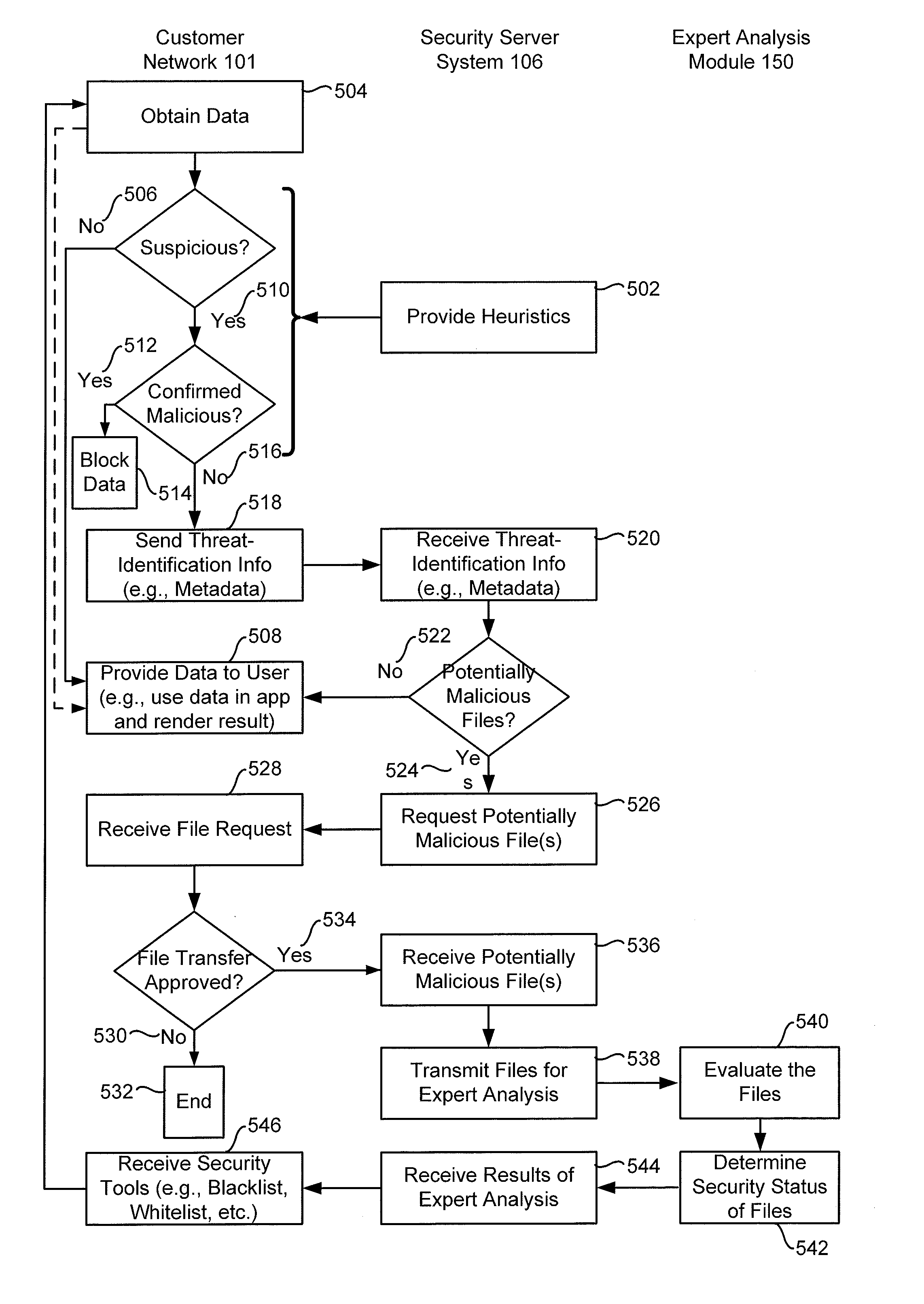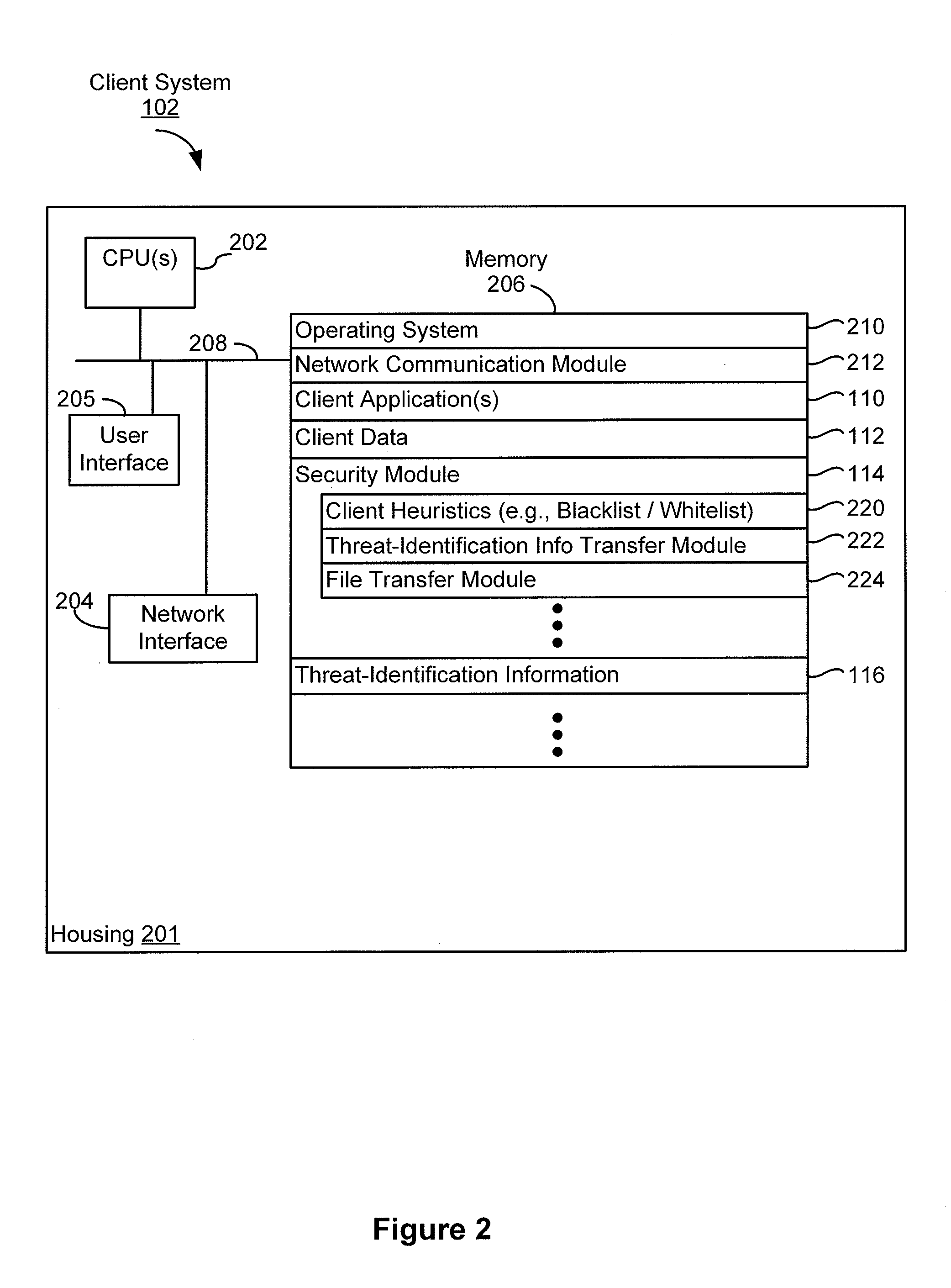Determining a security status of potentially malicious files
a security status and potentially malicious technology, applied in the field of computer security, can solve the problems of malware such as viruses, worms and trojans, which are the principle threat to the normal functioning of computers and the information stored, and the software is constantly expanding, so as to achieve long response time and detect threats.
- Summary
- Abstract
- Description
- Claims
- Application Information
AI Technical Summary
Benefits of technology
Problems solved by technology
Method used
Image
Examples
Embodiment Construction
[0013]The present invention is generally to the field of computer security, and in particular, to a system and method for efficiently determining a security status of potentially malicious files. FIG. 1 includes a block diagram illustrating an exemplary distributed Client-Server System 100 for efficiently determining a security status of potentially malicious files. System 100 includes a Customer Network 101 with one or more client systems (e.g., Client System 102) and one or more Security Manager Systems 104 and a Security Server System 106 for analyzing potentially malicious files. A Communication Network 120 connects Client System 102 and Security Manager System 104 to Security Server System 106. Communication Network 120 optionally includes the Internet, one or more local area networks (LANs), one or more wide area networks (WANs), other types of networks, or a combination of such networks.
[0014]Client System 102 optionally includes at least one client application 110, client da...
PUM
 Login to View More
Login to View More Abstract
Description
Claims
Application Information
 Login to View More
Login to View More - R&D
- Intellectual Property
- Life Sciences
- Materials
- Tech Scout
- Unparalleled Data Quality
- Higher Quality Content
- 60% Fewer Hallucinations
Browse by: Latest US Patents, China's latest patents, Technical Efficacy Thesaurus, Application Domain, Technology Topic, Popular Technical Reports.
© 2025 PatSnap. All rights reserved.Legal|Privacy policy|Modern Slavery Act Transparency Statement|Sitemap|About US| Contact US: help@patsnap.com



